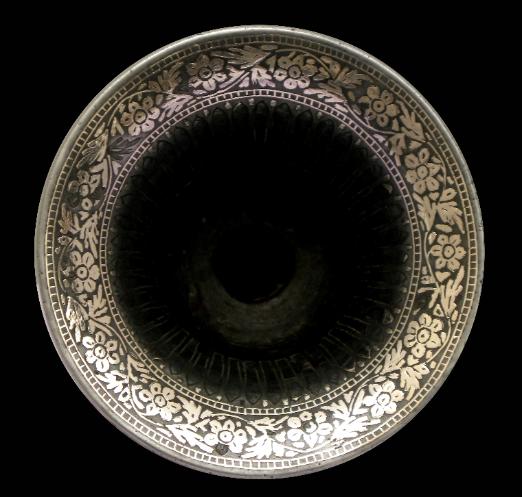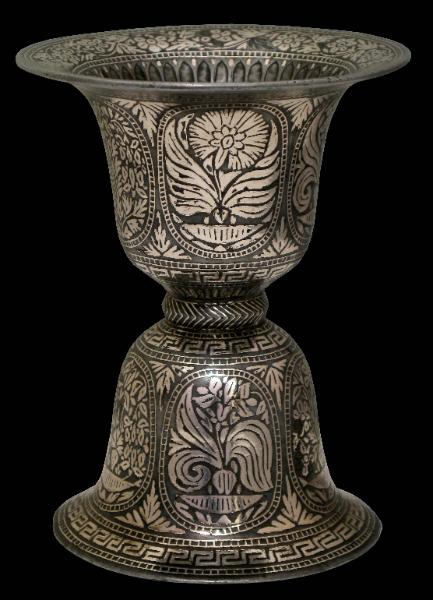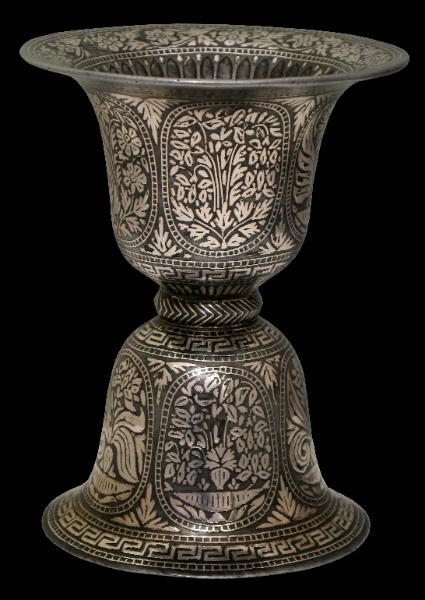
Bidri Spittoon



Unusual Chinese-Influenced Bidri Spittoon
Bidar, India
early 19th century
height: 13cm, diameter: 10.4cm
This double bell-shaped spittoon, which dates to the early part of the nineteenth century is decorated in silver with panels of different flowers including tulips and poppies. The inside of the rim is also decorated with a band of scrolling flowers and leaves, and the interior with a band of lotus petals.
Unusually, the piece shows Chinese influence in the four bands of Chinese key-fret pattern to the exterior. Items of bidri ware with this motif are relatively rare.
Most of the silver is intact on the exterior. The losses are more significant to the interior lotus petal band, but overall, the piece is a good example of early nineteenth century bidri.
Such a spittoon would have been used in conjunction with the taking of paan or betel.
Bidri ware is believed to have originated in the city of Bidar in the Deccan. It is cast from an alloy of mostly zinc with copper, tin and lead. The vessels are overlaid or inlaid with silver, brass and sometimes gold. A paste that contains sal ammoniac is then applied which turns the ally dark black but leaving the silver, brass and gold unaffected.
References
Similar bidri spittoons attributed to the early nineteenth century are illustrated in Zebrowski, M., Gold, Silver & Bronze from Mughal India, Alexandria Press, 1991, p. 182; and Okada, A., L’Inde des Princes: La Donation Jean et Krishna Riboud, , Tresors du Musee Guimet, 2000, p. 95. None, however exhibit the key fret motif apparent in this piece.
Inventory no.: 555
SOLD

